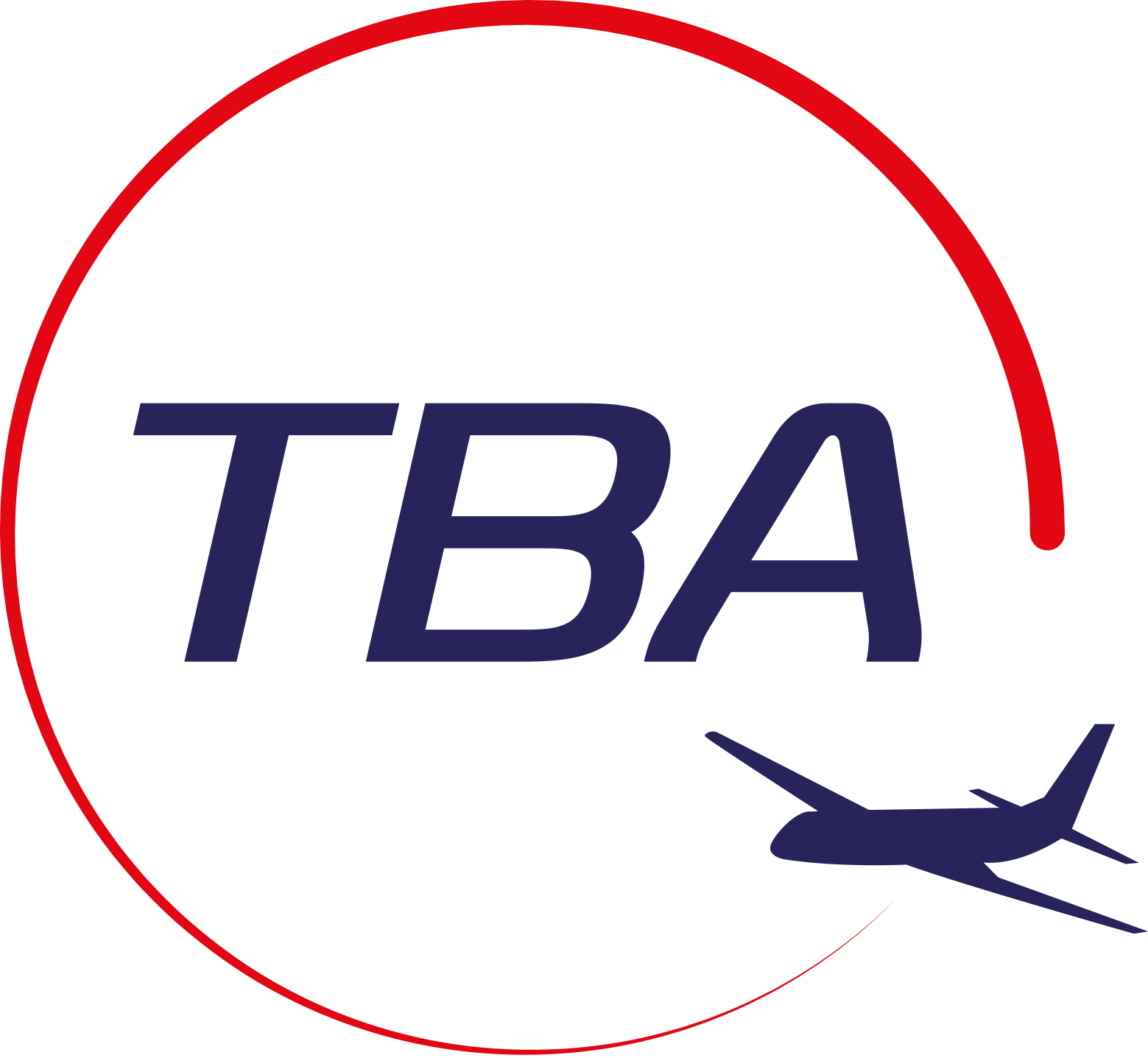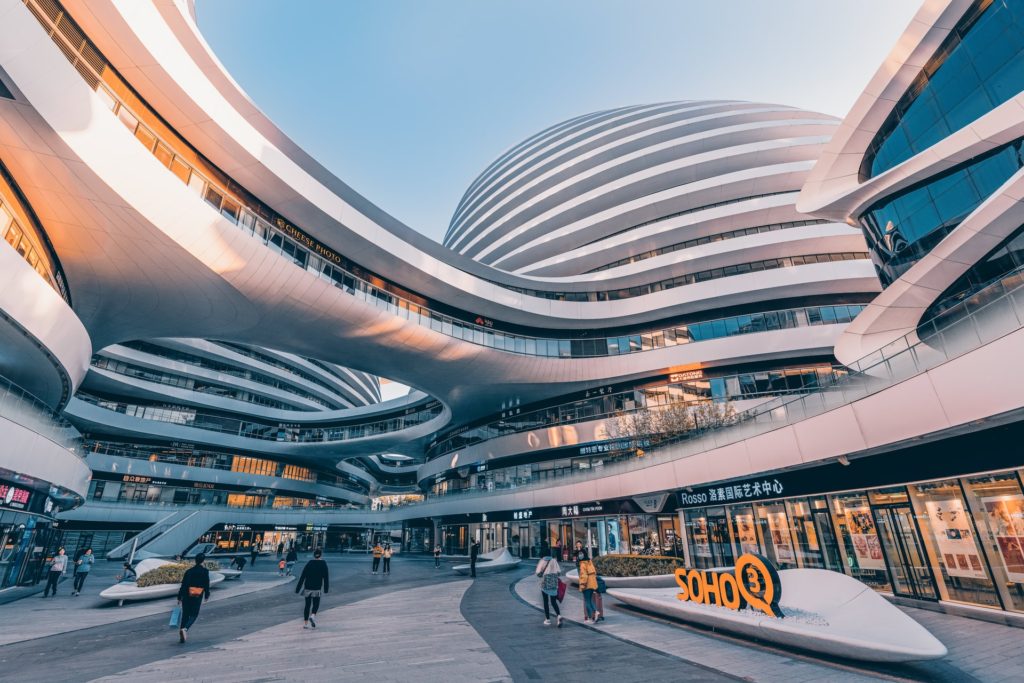
Research and knowledge are the first steps for Beijing and China Travel Business Assistance. Here is a fact file for Beijing and China to get you started. Contact us if you are looking to start a business in or expand your market to China. We have consultants ready to help you on the ground in China.
Simplify your business travels and market expansions – Book your free consultation with Travel Business Assistance now.
BASICS:
Population: 21.9 million (2021)
Population density: 4,600 people / km²
Total size: 16,411 km² (6,336 mi²)
Size of urban area: 3,937 km² (1,520 mi²)
Time Zone: China Standard Time (CST) = GMT+8
Currency: 1 Chinese Yuan (or Renminbi) = $0.15 USD
Official language: Mandarin Chinese
Romanization / Transliteration system: Hanyu Pinyin
Writing system: Simplified Chinese
Government: Chinese Communist Party (CCP) – a one-party state with unlimited presidential term
General Secretary of the CCP: Xi Jinping (pronounced: She jean-ping) (since 2012)
Climate: continental (hot, humid summers and brief, intensely cold and dry winters)
Precipitation: Due to the monsoon season, during the summer (May to September), there is rain about one out of every five days; however, during the winter (December to February), there is rarely any precipitation at all.
Hottest month, July: average high = 31°C (88°F); average low = 23°C (73°F)
Coldest month, January: average high = 1.7°C (35°); average low = −7.8°C (18°F)
Location: northern tip of the North China Plain
Urban planning: Characterized by the road construction of five concentric ring roads (beltways), which are numbered 2-6 (i.e. beginning from “Second Ring Road” to “Sixth Ring Road”)
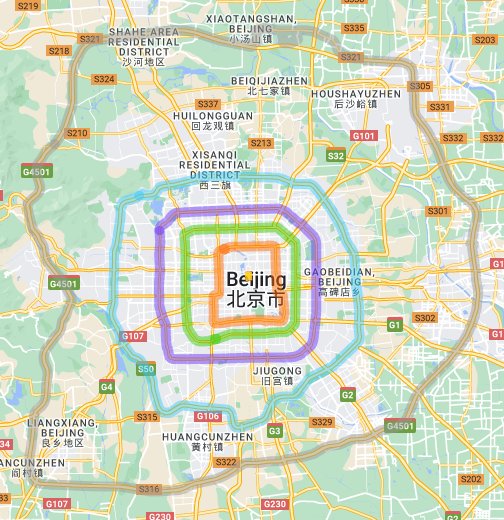
Doing Business Index Scores (World Bank) –
Overall score: 73.59 (2019)
Starting a business score: 93.7 (2019)
Registering property score: 82.18 (2019)
Trading across borders score: 82.01 (2019)
Enforcing contracts score: 79.12 (2019)
THE NORTHERN CAPITAL:
Beijing, the capital of the People’s Republic of China (PRC), is the world’s most populous national capital. By population size, it is China’s 2nd largest city after Shanghai, the 5th in Asia, and the 8th in the world. Currently, this equates to 1.6% of China’s total population of 1.4 billion people. With over 3,000 years of history, Beijing is one of the oldest cities in the world and is rooted in the historical tradition of Asia; the character “jing” in its name translates to “capital,” referring to the fact that it was historically one of several of the region’s historical capitals, and specifically the capital located in the north.
The dense urban growth that has defined much of Beijing—as well as much of mainland China—has only been a recent development in the last few decades, one that has crucially defined the modern geopolitical and economic role of the Chinese megacity. Since the PRC’s founding in 1949, China’s urban population increased from 10% to more than 50%; during this same period, Beijing’s population skyrocketed from 1.6 million to 21.9 million today, a size that is still growing. This makes the business potential of the Chinese capital enormous, which attracts immense international business development.
Once infamous for various social issues—such as environmental pollution—the city has made enormous strides to combat these challenges in recent years. Regarding air pollution, the local “smog” that was known colloquially merely as “fog,” due to its frequency, has now been regularly replaced by blue skies. In 2021, Beijing recorded only 10 days of heavy air pollution, 80% less than the number recorded in 2015. In the same year, Beijing met all its air quality indicator targets – which originally was predicted for 2030. Much of this progress has been attributed to regulations on limiting coal smoke, which was previously quintessential to both heavy industry and home heating. In recent years, Beijing’s real-time air quality index (AQI) has been regularly in a satisfactory zone, a promising development for business owners seeking a long-term lifestyle based in the city.
MUST SEE LIST:
- Tiananmen Square and the Forbidden City (Imperial Palace): This 720,000 m2 complex was home to 24 Ming and Qing-dynasty emperors and also houses the Mausoleum of Mao Zedong, the first Founding Father of the PRC. Inside the Forbidden City, visitors can also tour the Palace Museum to tour and experience ancient Chinese life.
- The Great Wall of China: The Badaling Pass, a 16th-century section of the Great Wall located an hour from the city center, was the first part of the Great Wall that was opened to tourists in the 1950s.
- Beihai Park: The 10th-century imperial garden is one of the oldest surviving in Beijing and is built on Lake Beihai; its beauty has inspired countless writers and poets throughout Chinese history.
- Tiantan (The Temple of Heaven)-: The Temple of Heaven is one of the premier models of ancient Chinese architecture, part of an imperial complex of religious ceremonial buildings where Ming and Qing dynasty emperors would visit for prayer.
- Bird’s Nest (Beijing National Stadium): This 2008 structure, in the shape of a “bird’s nest,” was inspired by traditional Chinese pottery and hosted the Opening Ceremony of the 2008 Beijing Olympics. In the winter, it currently hosts the world’s largest artificial indoor ski slope.
- Liulichang Street: This Old Quarter of Beijing is a popular place to shop for Chinese folk art, such as traditional paintings, calligraphy, pottery, carpets, vases, books, and scrolls.
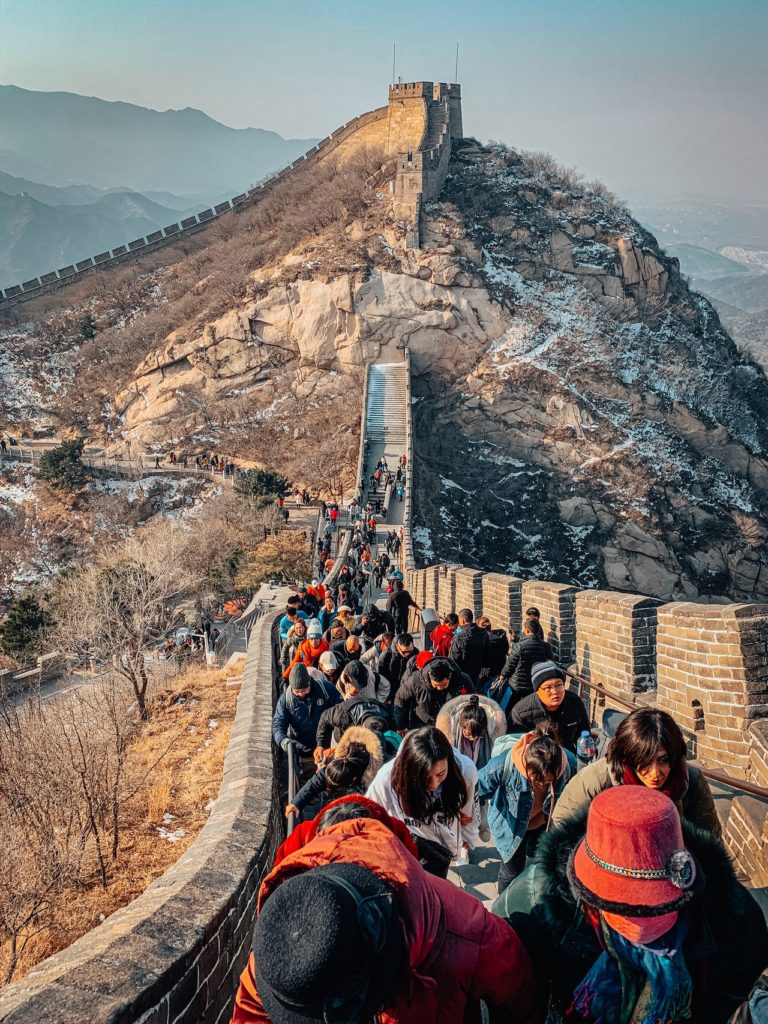
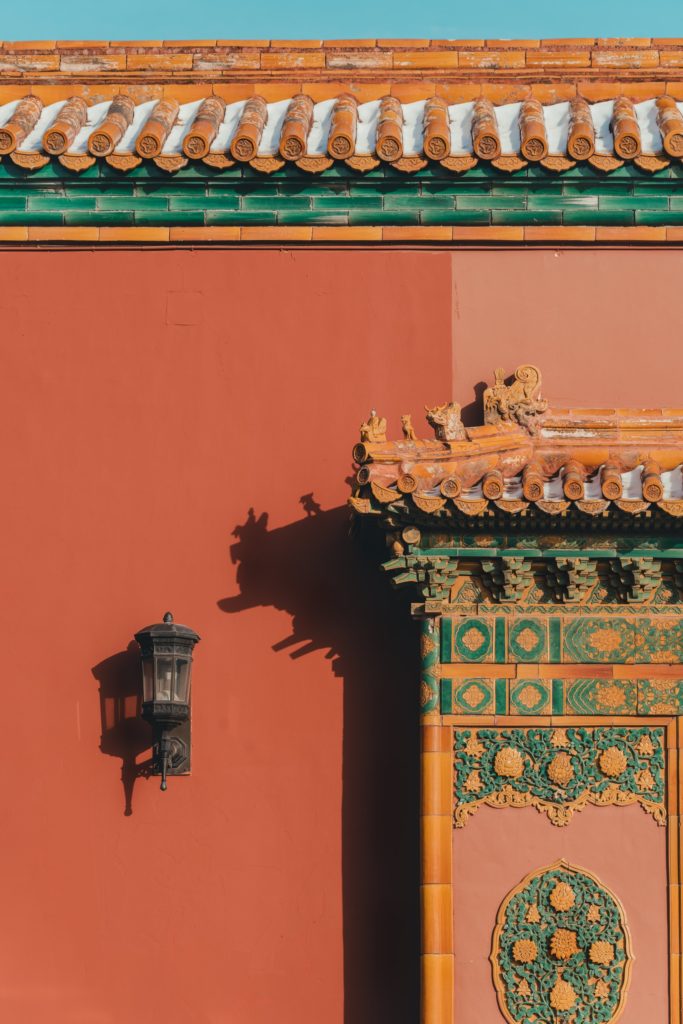
HISTORICAL LANDMARKS
- Yonghe Lamasery (The Lama Temple): This temple and monastery was built in the late 17th century during the Qing Dynasty. It is an important sacred site of Tibetan Buddhism and combines Han and Tibetan architectural styles.
- Beijing Ancient Observatory: One of the world’s oldest observatories, this pre-telescopic observatory that was built during 15th century Ming Dynasty China was the source of Chinese astronomical discoveries. These discoveries would influence Europe and the Middle East through ideas passed down the Silk Road. Beginning in the 17th century Qing Dynasty, Western astronomical instruments were added to the observatory, as well.
CULTURAL ATTRACTIONS:
- “The Giant Egg” (National Centre for the Performing Arts): arts center with an opera house for Beijing opera, theater, and exhibition halls
- Beijing Capital Museum
- Beijing Zoo- One of China’s premier zoos, the Beijing Zoo was established in 1906. It currently holds more than 1,000 species and 15,000 animals.
- 798 Art Zone: This abandoned factory area has become popular with modern sculptures and art, which are also for sale.
- Red Brick Art Museum (Art Gallery)
- Laoshe Teahouse
- Liyuan Theater: One of the most prestigious performance venues for Beijing Opera, Liyuan Theater employs mime and subtitle translation boards to help Western audiences understand the content of shows.
- Chaoyang Theater: acrobatic shows
- National Museum of China
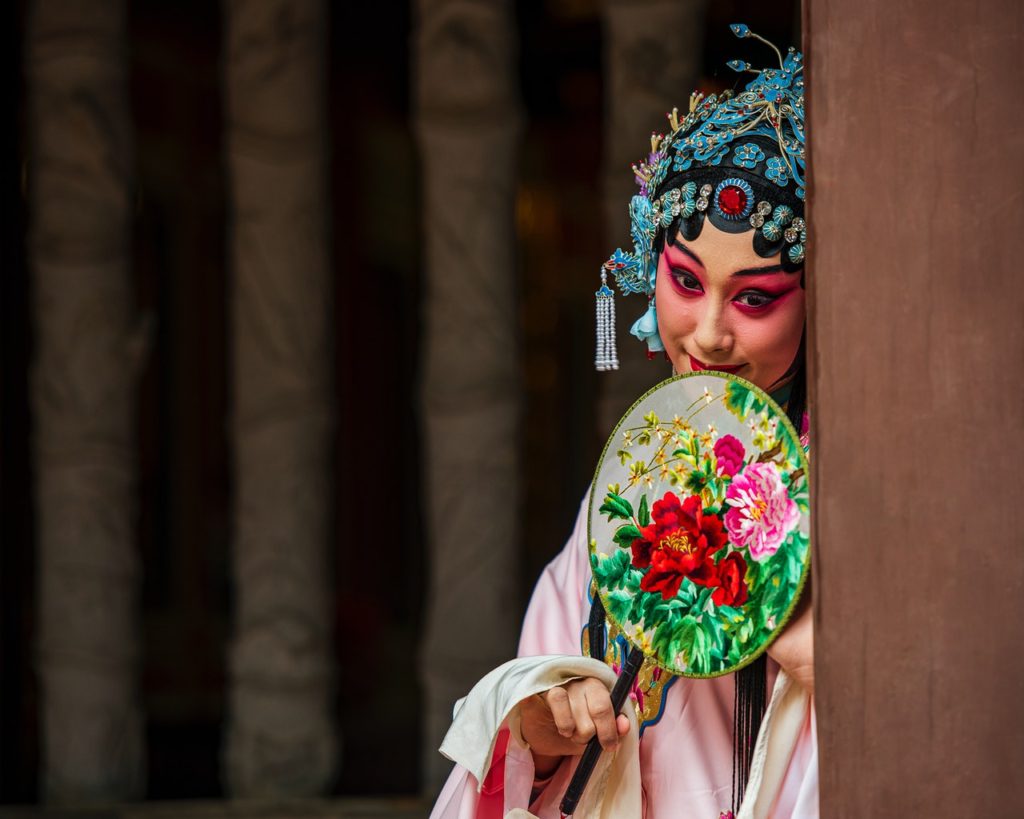
BEIJING CUISINE:
Beijing cuisine, or Jing cuisine, is blended from an amalgamation of Han, Manchu, Mongolian, Hui, and Korean cooking styles. Due to the presence of all these ethnic groups within the area, Beijing developed its own local foods and delicacies with the passing of centuries. Additionally, the chefs of the imperial courts and intellectuals brought their expertise to the capital city.
In contemporary Beijing, cuisines from all over the world are available, and popular with locals and foreigners alike. Western food is readily available, and steak is very popular locally. Global Western chains have developed redesigned menus catered to a Chinese audience, and international cuisine represents the modernization of a globalized capital. For those with dietary restrictions, many restaurants are available to cater to specific dietary restrictions—including vegetarian and vegan restaurants, Hui (the Chinese Muslim ethnic group local to Beijing) cuisine for halal diets, and gluten-free bakeries.
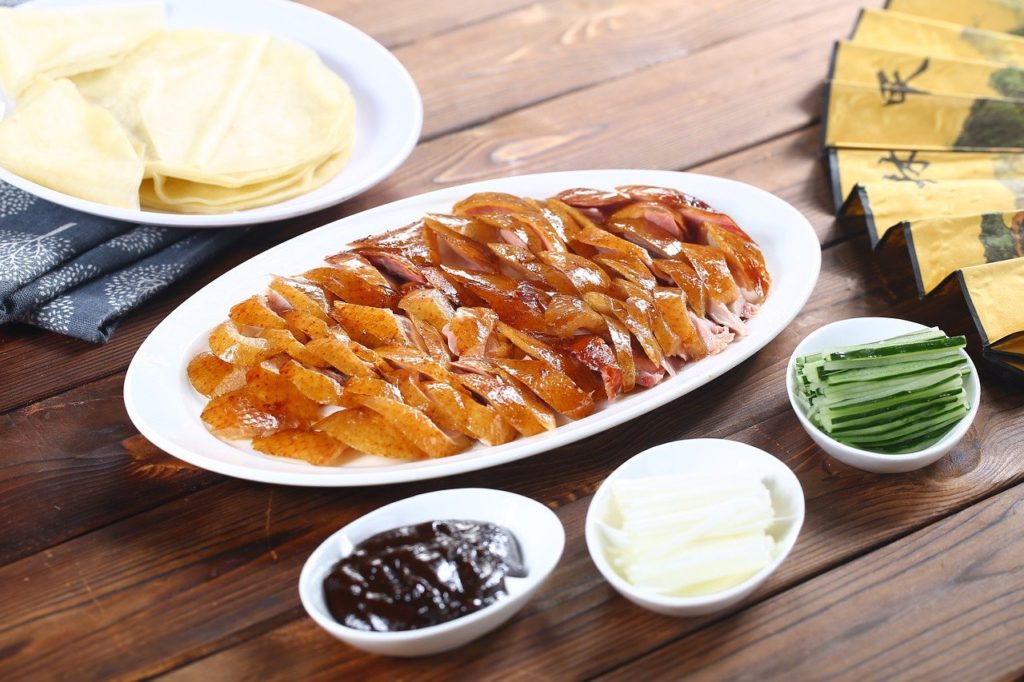
Meat dishes:
Beijing Roast Duck(北京烤鸭)
Shredded Pork in Beijing Sauce(京酱肉丝)
Donkey Burger(驴肉火烧)
Mutton Shabu-Shabu (Shuai yangrou)(涮羊肉)
Pork Stew (Luzhu huoshao)(卤煮火烧): One of the most well-known Beijing street foods, Luzhu huoshao is known for its strong odor and was historically treated as a luxury. It is a stew cooked with various cuts of pork, including pork liver, lung, intestines and “blood curd.” It is served with Chinese fried flatbread (bing / 饼).
Fried Pork Liver (Liu gan jian)(熘肝尖)
Fried Pork Intestine (Zha guan chang)(炸灌肠)
Zhizi BBQ (Zhizi kaorou)(炙子烤肉)(usually halal): Traditional Beijing barbeque originated from Hui Chinese (the local Muslim population) tradition. Meat is grilled on a zhizi, a round iron plate traditionally fueled by firewood. Firewood infuses the meat with aroma, lending to a unique taste.
Vegetarian:
Fennel and Egg Jiaozi (Chinese Dumplings)(茴香饺子): Jiaozi dumplings are traditionally known as a northern-style food, and Beijing is famous for its fennel and egg filling dumpling. Try it with dumpling sauce made from a 50/50 mixture of Chinese black vinegar and soy sauce.
Mustard-Marinated Cabbage (Jiemo Dun)(芥末墩): This traditional Beijing dish is made with blanched napa cabbage. A mustard sauce is poured on the napa cabbage, and the dish is left to marinate for at least a day. The dish is served cold, a great palate cleanser between greasier dishes that carries the pungency of mustard.
Wheat flour-based dishes:
Northern Chinese cuisine has traditionally been distinguished by wheat flour foods—such as noodles, dumplings and pancakes—due to a diet based on grain crops. This is in comparison to Southern China, where rice paddies and a rice-based diet dominates. Each of the dishes below can be made vegetarian or vegan, although not all restaurants may do so—ask ahead of time.
Noodles with Fried Soybean Paste (Zhajiang mian)(炸酱面): This wheat noodle dish originated from Shandong province, and the Beijing rendition of the dish is topped with ground meat stir-fried in a mix of yellow soybean paste and sweet soybean paste. The noodles are served with raw julienned cucumber and sometimes a variety of other chopped vegetables. Another version of zhajiang mian exists in Sichuan province, but this version is not related to the northern Chinese dish and has a different taste profile. However, the northern Chinese zhajiang mian is the origin of one of the most famous Korean noodle dishes, jajangmyeon, which features a Korean rendition of Chinese sweet soybean paste. A vegetarian version can be prepared with shiitake mushrooms in lieu of ground meat; try to ask for this when ordering with dietary restrictions,
“Satchel” Dumplings (Dalian huoshao)(褡裢火烧): These pan-fried flour dumplings are stuffed with a variety of meat-and-vegetable savory fillings, including pork and lamb with cabbages, fennel or green onions. The word dalian comes from the name for a type of traditional rectangular “satchel” that was carried traditionally, referring the rectangular, brick shape of Dalian huoshao.
Beijing Spring Pancakes (Chunbing)(老北京春饼): A popular dish served in the spring, these paper-thin, crepe-like pancake wrappers are used like tortillas to wrap vegetables and meat. Chunbing can be traced back to the Tang Dynasty, and are similar (but larger than) the pancake wrappers served with Beijing Roast Duck. Chinese spring rolls are a later invention that use chunbing as a wrapper before they are fried. When served, chunbing are presented unfilled and empty for the diner to fill with a variety of dishes.
Desserts:
“Rolling Donkey” Rice Cake (Ludagun)(驴打滚): This glutinous rice cake dessert is “rolled” with dark-colored red bean paste—or traditionally brown sugar—lending to its name, which does not refer to actual donkey in the dish (unlike the donkey burger mentioned above). The dessert is sprinkled with yellow soybean flour, then sliced into pieces.
“Rock Sugar Calabash” (Bingtang hulu)(冰糖葫芦): This traditional Chinese snack dates back 1,000 years to the Song Dynasty, and it remains popular in China to today. Red hawthorn berries are pierced on a bamboo skewer and coated with sugar syrup that forms a crystal clear coating (of rock sugar) when cooled. The round shape of the hawthorn berries on a skewer form the shape of a calabash gourd, but the sweet does not contain calabash. In a modern spin, other fruits are sometimes used in place of the hawthorn.
Sweet Pea Pudding (or Pea Flour Cake) (Wandou huang)(豌豆黄): This traditional Beijing dessert is made with mashed split yellow peas or split pea powder. It is popular in the springtime when peas are harvested.
Sachima (or Saqima): Sachima originated from Manchu China, consumed as energy bars for the Manchu Qing as they defeated Ming China. They look like Rice Krispies Treats but are made from wheat flour and a caramel coating instead of puffed rice and marshmallows. Like most Chinese sweets, they are sweet, but much less so than their Western counterparts; this makes for a dessert that is much healthier than similar desserts in the West.
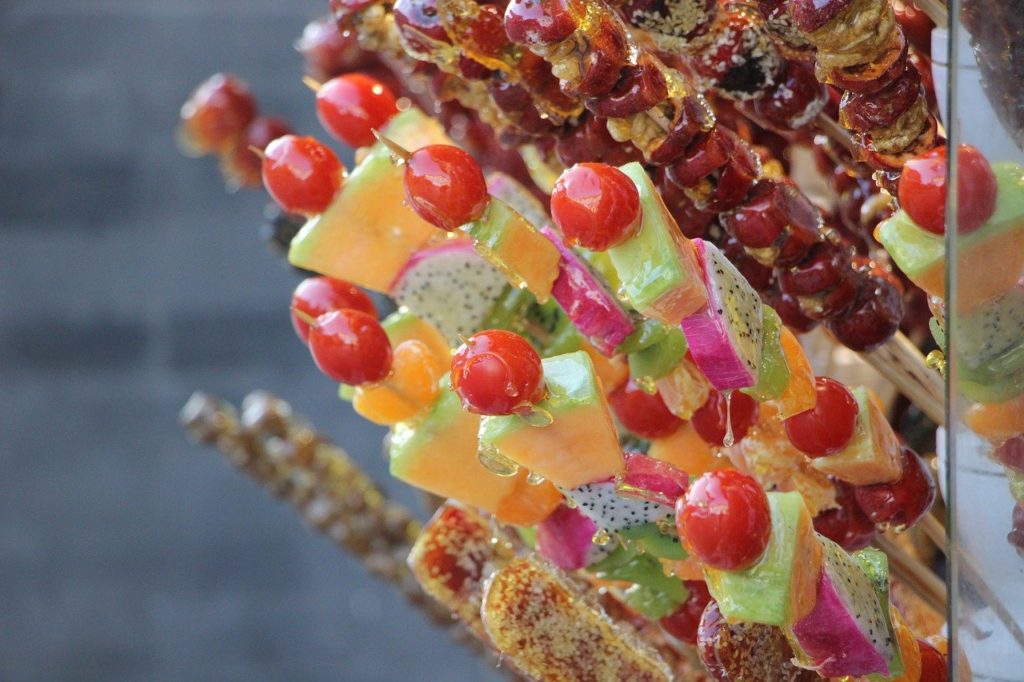
Grocery shopping:
- Chinese supermarket chains: Chaoshifa (超市发), Jinkelong (京客隆), Beijing Hualian Group (BHG / 北京华联集团)
- Western supermarket chains: Walmart (American) (沃尔玛), Carrefour (French) (家乐福), Auchan (French) (欧尚)
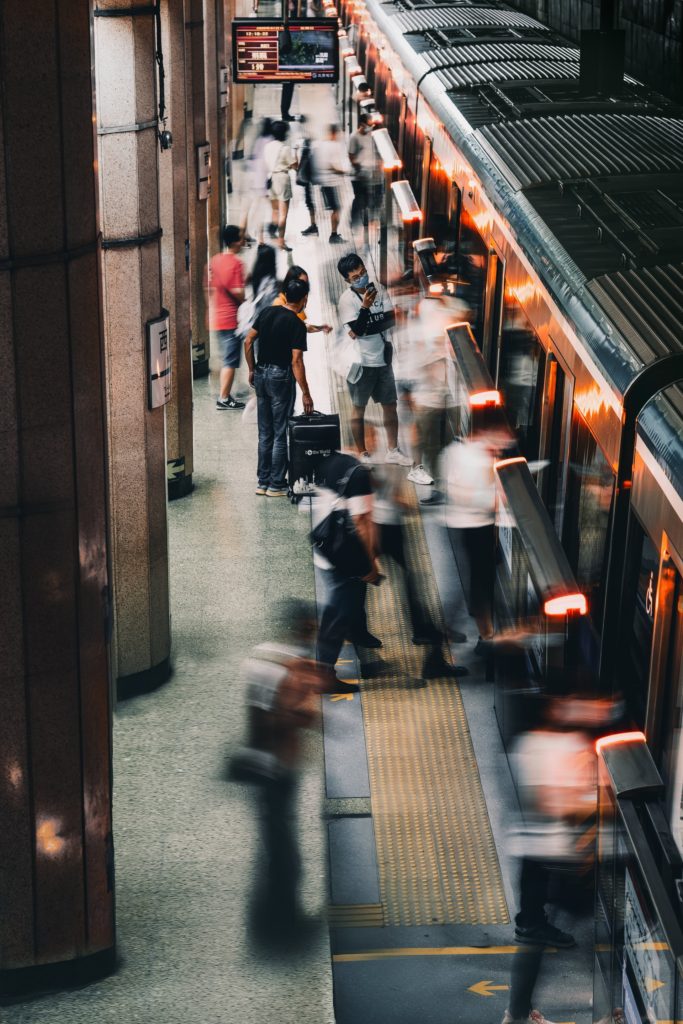
TRANSPORTATION:
Beijing is a transport hub of China, with seven completed ring roads (beltways) encircling the city. Five of these ring roads pass close to Beijing, while the sixth and seventh are outside of the city; the seventh outer ring road reaches all the way to the city of Tianjin. In addition to the ring roads, nine expressways and eleven China National Highways collectively point in all directions.
Major airports:
Beijing Capital International Airport (IATA: PEK)
Beijing Daxing International Airport (IATA: PKX, ICAO: ZBAD)
Intracity transportation:
- Beijing Metro: When its extension is complete, the Beijing Metro will be the largest subway system in the world. It is an inexpensive form of inter-city transportation.
- Buses: More than 1,200 bus routes connect all areas of Beijing. These lines include regular downtown, suburban, night-time and intercity routes.
- Taxis and Didi (Chinese ride-share application): Note that especially in the center of the city, taxis and Didi are not always the fastest means of transportation due to crowded traffic
- Bike rental
Intercity high-speed rail (HSR):
The Chinese HSR system is the longest and most used in the world, with 2/3 of the world’s total. At the end of 2021, its total length measured 40,000 km (24,855 mi); for its 2025, 2030 and 2035 goals, China plans to increase its HSR rail length by 10,000 km (6,214 mi) per year, to reach by 50,000 km (31,069 mi) by 2025 and 70,000 km (43,496 mi) by 2035.
HSR rails operate at 200-350 km/hr (120-220 mph), and the Beijing-Shanghai HSR is the fastest in the world. Its top speed is 350 km/hr (217 mph); a previously 10 hour sleeper train trip or 12 hour drive now takes less than half the time, at only 4.5 hours.
DOING BUSINESS IN BEIJING:
Consumption-driven business growth in the past two decades has transformed Beijing into the hub of one of the world’s most important economies. As a result, businesspeople and investors are attracted to lucrative and avant-garde opportunities in the Chinese capital. In Beijing’s Chaoyang District, the Central Business District (CBD) houses countless multinational corporations and their Chinese headquarters. By operating out of the nation’s capital, these companies are able to utilize their proximity to other large Chinese cities to their business advantage.
Most recently, the region has directed its technological innovation towards 5G development, artificial intelligence (AI) and the industrial Internet, which continue to facilitate business development in the city. For example, the development of a simple and universally accepted electronic payment system has made cash obsolete in the last decade, simultaneously generating both online and offline sales. This, combined with a high and continually increasing disposable income, has created a consumer atmosphere that promotes business growth. The large Chinese population offers a huge consumer market, and as China is expected to surpass the U.S. in its GDP by 2030, this market will only become larger.
Lastly, Beijing offers a huge talent pool of potential employees—highly educated and bilingual. Almost 80% of the city’s population is of working age, creating enormous interest among the city’s population towards career potential. This gives foreign businesses the benefit of access to a great local workforce.
More information on establishing a business in China
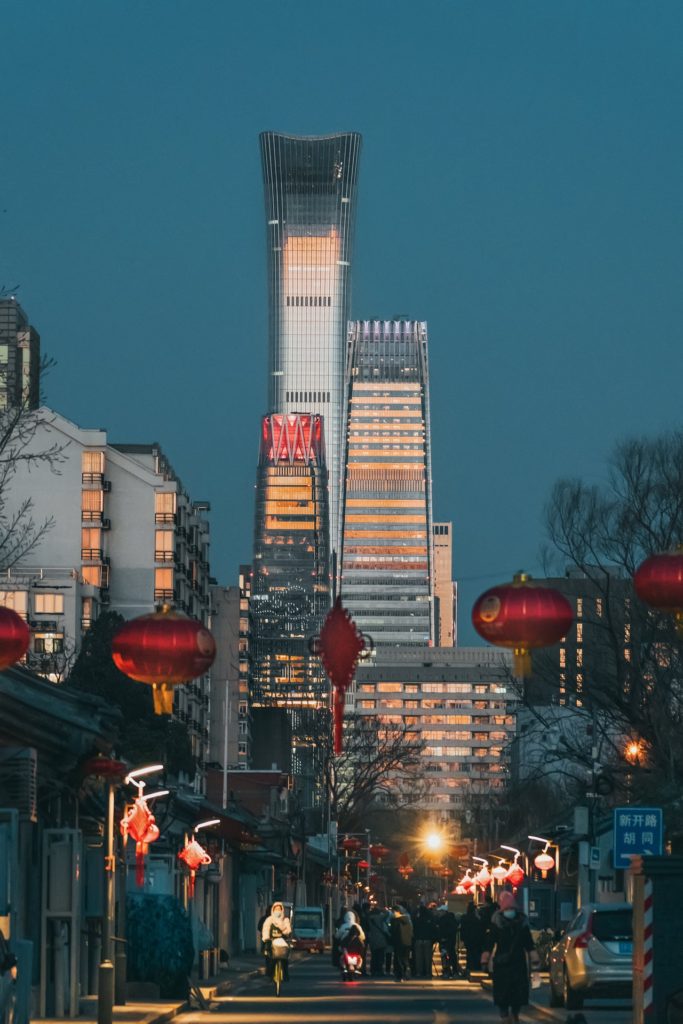
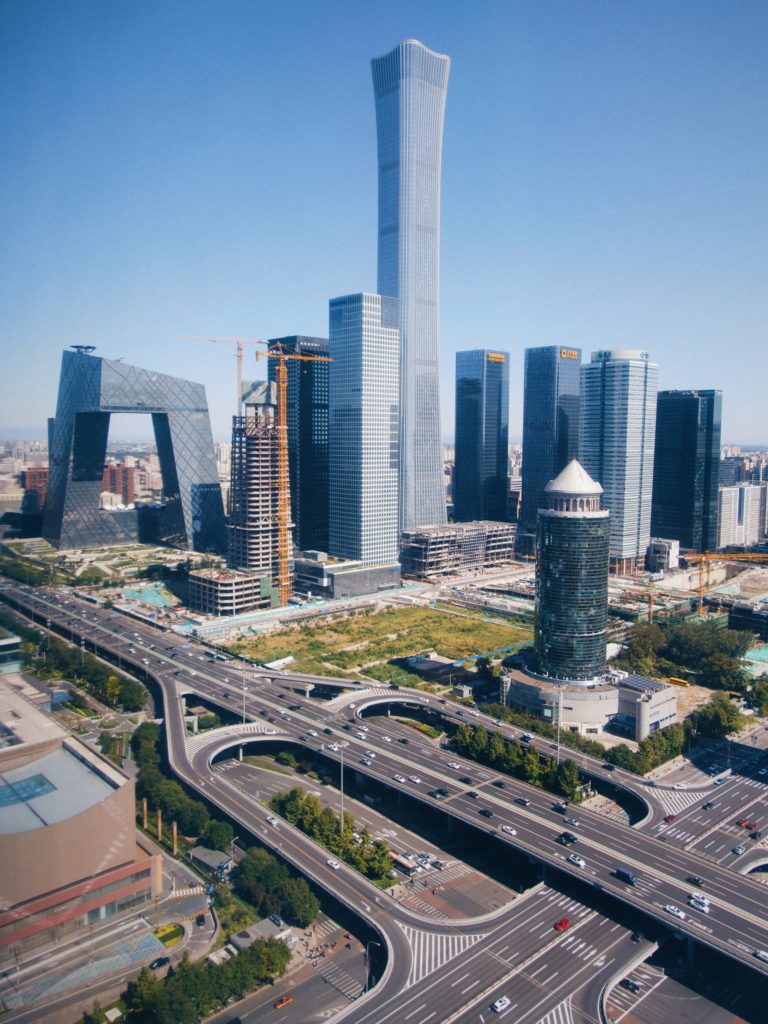

Beijing and China Travel Business Assistance
Are you planning to move your business to China or open up China as a new market? Perhaps there is a conference in China you need to attend and you need some help. We are here for your China Travel Business Assistance.
